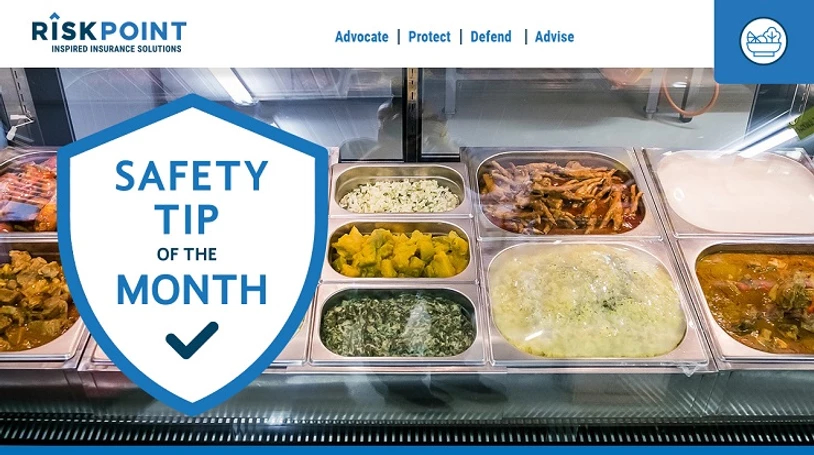Food poisoning can ruin any meal. It can also ruin your store’s reputation. Risks can arise during every process, from receiving food from vendors to selling it to customers. Deli cases also can be a big source of contamination. Avoid problems by being diligent about safe food handling. Keep these best practices in mind:
Unloading and Receiving Food
Safe food handling starts with the receiving process. When food deliveries arrive, inspect everything and reject anything that is spoiled, expired, leaking or otherwise damaged.
Don’t leave food out. Items must be put into a freezer or cooler promptly to maintain safe temperatures.
Storing Food
Food storage introduces new opportunities for bacteria growth and foodborne illnesses.
Perishable food should be refrigerated at 40˚ F or below. But be careful – even chilled food won’t last forever. Freezing food can keep it safe until cooked, but it does not kill bacteria. Rotate food and watch the expiration dates.
If the power goes out or a door is left open, the correct temperature may not be maintained. If the temperature has been impacted by an incident, inspect the food and dispose of any food that might be unsafe.
Preparing Food
When preparing food, employees may inadvertently introduce contaminants. Before and after handling food, employees should wash their hands for at least 20 seconds with warm water and soap. Employees should also wash their hands when starting work or returning from breaks – especially bathroom breaks. Also clean utensils and surfaces where food will be prepared, such as counters and cutting boards.
Food must be heated to the proper temperature. Different types of meat, fish and poultry have different requirements. See FoodSafety.gov for a chart with detailed minimum temperature information.
Use separate utensils and containers to avoid cross contamination. Be aware of bacteria risks as well as food allergy risks. For example, if you accidentally get peanut oil in a dish that’s supposed to be peanut-free, a customer with a peanut allergy could have a dangerous reaction.
Displaying and Selling Food
When displaying food, it’s not enough for the food to look nice. It also has to stay safe. The “Danger Zone” for food is between 40˚ F and 140˚ F. Don’t leave food out in this temperature range for more than two hours tops, or one hour if it’s above 90˚F. Check the temperature regularly and maintain logs.
When serving food, avoid cross contamination by using separate utensils for each food item. Package food securely to avoid additional contamination threats.
Reheating and Disposal
If food must be reheated, it should reach a minimum temperature of 165˚ F.
Every day, check food and dispose of unsold or expired items. When it comes to food safety, you can never be too careful.
Download our Safe Food Handling Safety Tip and regularly train and monitor your team to ensure best practices are followed. Talk to the grocery insurance team at RiskPoint Advisors to ensure you have adequate protection against this costly exposure.
| Joe Scarpello | Melissa Johnson |
| 253.444.5584 | 253.444.5654 |


